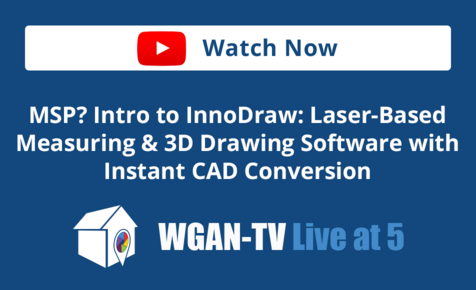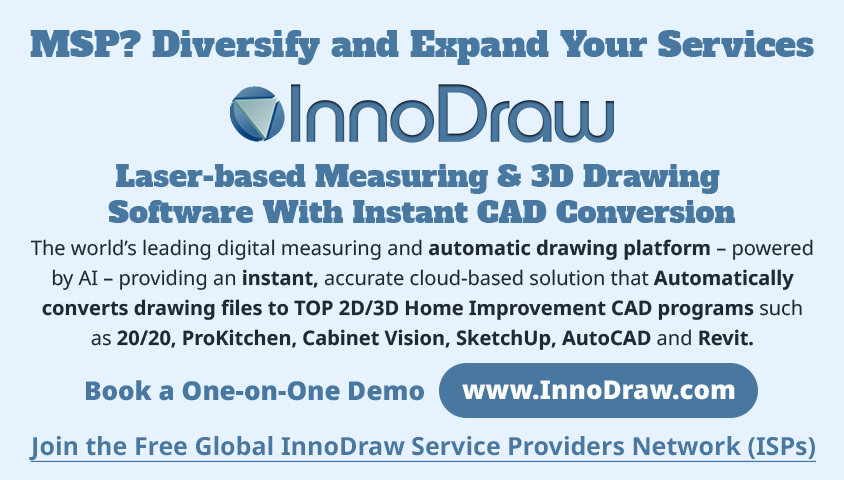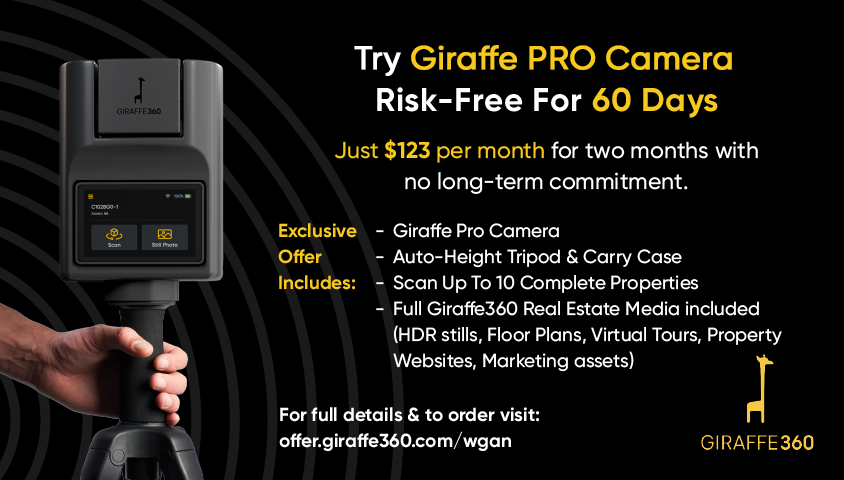#ICNY17 Change Your Lens on the World: VR3698
Pages:
1
 WGAN Forum WGAN ForumFounder & WGAN-TV Podcast Host Atlanta, Georgia |
DanSmigrod private msg quote post Address this user | |
Video: Change Your Lens on the World with VR at Inman Connect New York 2017 -- Panel Description and Speaker Bios Brad Inman, Moderator (substituting for Jake Silverstein) Founder and Owner Inman Connect Jenna Pirog Virtual Reality Editor The New York Times Magazine Marcelle Hopkins Executive Producer, 360 News The New York Times Magazine Aaron Luber VR Cardboard Partnerships Peeps At 11:15 into the video, the panel acknowledges the "early adopter" with the Ricoh Theta S in the audience: that's me! Many of the VR presentations mentioned Matterport and VR. Thousands of tech-savvy real estate agents were in the audience. |
||
| Post 1 • IP flag post | ||
 WGAN Forum WGAN ForumFounder & WGAN-TV Podcast Host Atlanta, Georgia |
DanSmigrod private msg quote post Address this user | |
| Here is a transcript of this video. Best, Dan --- Intro: Virtual reality is changing our view of the world. Please welcome Jake Silverstein [Brad Inman replaced Jake as moderator], Jenna Pirog and Marcelle Hopkins of the New York Times and Aaron Luber with Google. Brad: Oh my God! Unbelievable. Now, we’ve got a serious group here. New York Times, that’s so serious – and Google. We’re going to sort out what VR is doing, where it’s going and show you some unbelievable work with New York Times. Over the end of the day, we saw some spectacular stuff. But also, trying to sort of your timing with this new technology. As we all know, real estate is about space and location, which we all think VR is perfect for. When should these folks start investing? Is there an audience? We know it’s spectacular but let’s bring it back there. Let’s start with the demo and show some really cool VR. Jenna: Yes, sure. Brad: VR is virtual reality and AR is augmented reality. Aaron: You got it. Brad: And mixed reality is MR. Aaron: MR is merged reality. Brad: And I just had an MRI recently. Is that it? Okay, just kidding. Jenna: Hi everybody. I’m Jenna Pirog. I am the Virtual Reality Editor of the New York Times which is a very strange title for the Times. It makes me sound like a hologram or something like that but I assure I’m not. I’m here and I’m here to tell you a little bit about VR. About a year ago, the New York Times made an investment in this new technology. It’s also a new medium similar to the advent of photography or video so we’re very excited about the new medium and it’s a new opportunity for storytelling. The one thing we figured out the most is that virtual reality is about presence. It’s about transporting your viewer to another place, maybe a place they never go or never had the opportunity they knew existed. So, I thought what other place to start than the top of the World Trade Center here in New York City? For The New York Times Magazine’s annual issue last June, we have been begging 1 World Trade Center, “Please let us send Jimmy Chin, the famous adventurer and mountain climber who climbed all of the greatest peaks in the world multiple times over. Please, let us send him to the top of the World Trade Center to make an epic cover photograph for our issue?” They finally said yes about a week before the shoot and then it was my time to walk in and say, “Jimmy, please take this virtual reality camera with you.” We gave him a 3-foot long monopod and a clamp with a VR camera and he took it up the spiral with him to film what it looks like from the top of the World Trade Center. This a place most people will never, ever get to go. While I’m showing this as a 360 video, which means it’s flat on the screen. We’re scrolling around in a frame. When you watch this on a headset, when you put your phone into Google Cardboard or Daydream or a Gear VR, when you watch it in a headset, then this world is all around you in every direction. I’m actually seeing people grip on to the nearest table because they feel like they’re going to fall off. It’s an incredible visceral experience. This video also garnered millions and millions of views across the various platforms where we put our VR and 360 content – Facebook, YouTube, our own app, the NYTVR app. It’s very clear to us. People are very intrigued by this content. There’s a very big response to this new world that they’re put in. Brad: Let me ask you a question. When you have the camera or the headset on, are you Jimmy? Jenna: No. You are Jimmy’s climbing companion. Brad: Where am I sitting next to Jimmy in that situation? Am I like right next to him? Jenna: Yeah. Essentially, every time we send a filmmaker, photographer or videographer with this camera we say, “Treat this camera,” which is a ball of cameras with all lenses facing out, “Treat this camera like the head of the viewer.” Brad: Got you. Jenna: “Put it in a place where a spectator might stand. Where will a New York Times audience or viewer stand to watch this action?” We place the camera at eye level height. We place it in the situation where they might be able to observe the action. Brad: They will be really experiencing it, anyway. Imagine if someone else here took some VR of their neighborhood where they sell real estate. So, you’re saying eye-level with the cameras, things like that. What else? Jenna: Yeah. Because if you put the camera, say 7 feet tall the person’s going to feel like a 7-foot tall human. Brad: Got you. Here’s the lay of the land – the hardware, the software, the platform, the distribution, the audience. Where do we stand today? Where should these guys go invest a bunch of money and start doing VR for their customers? Aaron: Sure. I’ll talk a little bit about what Google is doing. In general in the space right now, it’s a very exciting time. We are seeing a massive ramp up in technology right now across all major technology companies, Google being of course one of them and Facebook which acquired a company called Oculus Rift, Samsung with HTC. Sony released a PlayStation VR not too long ago. Really, it’s an amazing time. We spent the past two, three years almost getting technology ready for the mainstream and it’s finally here. All of these commercial VR headsets are now available for consumers to purchase and that’s a big deal. Previously, it was only developer kits and early adapters who are taking the technology and now anybody can go and purchase this which is really exciting. Still, early days, but accessibility is a very important thing. Brad: Are we talking thousands or millions of people or is it starting to really like, iPhones took off. Is that kind of…? Aaron: It is growing. There are many different [0:06:50.7] that think there’s very, very wide approach in the course of the next few years. For us, for Google we started with something called Google Cardboard which is really was something 20% project for Google, a side project, a small project that we do. A team of three very talented guys in our Cultural Institute in France created this first cardboard. They wanted to see what it was like to do a first person view Street View. They wanted to see what it is like to be in France and go down Champs-Élysées and see everything. They built a simple software app in a mobile phone and they built a viewer to drop the phone into and used the phone as a virtual reality viewer. It was a cheap, simple way of using your phone to view VR. We took that and introduced that to the world. Overnight, it exploded. We didn’t really see this as a big hit that it was but I think everyone recognized as we did the power of mobile phone to deliver you a VR experience. Brad: In that case, all I need is my iPhone, a headset and this is the cardboard. Aaron: That’s right. Brad: So you’re talking pennies – not pennies but dollars. Aaron: Dollars, yeah exactly. One of the biggest moments that we had of course was November of 2015 when we distributed over a million cardboard with The New York Times. That was a pivotal moment for Google, for The Times, for the world because this was the first time we were really getting accessibility of VR to a lot of people. Since then, we distributed millions and millions of cardboard, not just Google and The Times but we open sourced the platform so many, many other companies have been taking it and made their own version of cardboards. Over the holidays – and I’ll speak about some of the other stuff that we’re working on – but cardboard is still a very important thing for us. Over the holidays, we saw an incredible spike again in app installs and usage and things like that, which again showed us that everybody made a cardboard for their stocking stuffers for the holidays. It was a great gift for everybody for their first VR experience. Jenna: We also see a huge spike in our app and audiences during holidays. We think people really get together and, “Check this out. Oh my gosh, have you heard of this?” That’s how the technology spread. Aaron: Exactly. Brad: How many here…? Can we turn the lights in the audience so I can see? How many of here, raise your hand if you have some sort of headset or any kind, cardboard or otherwise? That’s pretty good penetration, 20-30% Aaron: I actually would like to say, I’m always like, “Who’s done cardboard, who’s done VR, who’s done Rift and Vibe?” It goes down and down and down. You held your hand up, great. Everybody is – whether you’ve done it all or you’ve done none of them, we’re all in the same space right now. Everybody is in the tip of the iceberg right now where VR is and it is really exciting. But no one has missed the boat. A lot of times we hear, “I missed this boat, I missed this opportunity in VR right now.” That’s not the case. We certainly believe that things are about to ramp up very quickly over the course of the next two years. And so, we’re working with a lot of partners right now across a lot of different areas. Real estate certainly has been a very, very focal point for us. Brad: Real quick, everyone says the AV, not augmented reality but AVT. We’re looking at a cool video down here but it’s only for the benefit of us four. Is there any way to put up running up here in the back? If not, that’s cool. We got the terminology. So you need this, you need an iPhone. Now tell us about, maybe we can ask you Marcelle. If they were to buy a camera, are we like with video where it’s really expensive and very big and it slims down? How much money do you have to spend on a camera to shoot this stuff? Marcelle: There’s a whole range of cameras. On the lower end, the less expensive end, it’s a couple hundred dollars. These are consumer cameras that do automatic stitching so you don’t have to worry about, “How do I put the files from the various lenses together?” The camera does that for you. There’s something called the Ricoh Theta S which has two lenses. There’s a Samsung Gear 360. Each of those are around $300-$400. You have one, there’s Ricoh. Aaron: I’ll talk to this guy after this. [points to We Get Around Network Forum Founder Dan Smigrod] Marcelle: Yeah. They’re small. The Ricoh Theta S is smaller than your phone. The Samsung Gear is about the size of a billiard ball. You can put it in your pocket. You can put it in your briefcase. Brad: What’s that piece of equipment? Marcelle: The camera. Brad: That’s the camera. Marcelle: The 360 camera. Both of those have two lenses that film 180º on each side. Within the camera, there’s an app that will stitch those for you and make a spherical video file. Brad: I’m just curious. How big of a file is that compared to a video file? About the same or much bigger? Marcelle: There are different sizes of video files, but they are about 4K. Brad: Got you. So you have the camera, we’re going to ask this guy [Dan Smigrod] in a second – but I assume, I can imagine a world where a realtor will have a camera, shoot some really cool stuff and then they send out the Google cardboard for distribution and show his clients how cool he is. What will be the challenge that’s there with that guy doing that, that Realtor? Aaron: There’s a lot of challenges. There a lot of start-ups popping up in real estate right now. IRIS VR case right here in New York, a few other companies. The challenge is you want to distribute widely to a lot of people so they all see properties and things like that. Distributing cardboard is a great opportunity to do that. We also see companies bringing people to their offices to give them VR experience from within their office. We can see it both ways. I know there’s a lot of firms out there, big firms that are literally sending VR demos. They’re recreating the real estate space that they’re building and having people instead of go on tours and take them to a bunch of places, come to the office in one location and will take you on virtual tour of all the different buildings and spaces you can look at. Brad: Great. We have a bunch of VR companies out there, they get to get the game to bring a list so we can get people that are demonstrating. Do you want to show some of your stuff? Do you want to show them some cool stuff? Marcelle: Sure. Brad: What city is that of? Marcelle: This is Nogales which is a city that travels the Mexican and Arizona border. We did a 360 documentary from there. Brad: Is there where people get kidnapped and tortured? Marcelle: There’s a place where a significant crime happened but we want you to put you in the scene of the crime and make up your own mind. Brad: But we’re not going to see any torturing. Marcelle: No, you’re not going to see any. Brad: Some of these people would love to see those. Marcelle: A few months ago, we started a new experiment with The New York Times to see if we could do 360 videos every day and really integrate it into our daily reporting and integrate it into part of the daily news consumption of our audience. We started a program called The Daily 360 where we put out a 360 video on our home page, on our apps every day. That began in November 1st [2016]. You can find it in on the home page every day. We’re working across the entire newsroom with all of the departments within The New York Times. We’re covering international affairs, culture, science, sports. The piece I’m about to show you is one we did with the travel section. It was a special section on bookstores around the world. There’s a bookstore in Portugal that was the inspiration for Harry Potter. It’s a beautiful, beautiful space. There’s a spiral staircase that goes up and has a big rotunda that’s really extraordinary. This is an example of a way that we can show off a space in 360 video and in VR. Brad: Again, I think it’s important. When you have the headset on, you’re having a whole different experience than showing a video of VR. Marcelle: That’s right. Brad: You’re present. Some of the clunkiness goes away as you move with the experience. Marcelle: If you will move your head. You can also view it on your mobile phone without a headset. You can view it on your desktop. I know a lot of you probably have websites where people come and look for properties. You can install an embed of 360 in your website where people can come and they can scroll around like this. They’re inside the room and they can look, “Okay. There’s the staircase. If I get to the top of the stairs, that’s it.” One of the things that we found is that VR 360 is very good at conveying spatial awareness and it’s very good for stories where space is almost like a character in the story. Where the space is really important, there is an understanding of – being in that space provides an added understanding of the story that we’re conveying. I’m just going to show one more. This was an international piece that we did that is fun. This is in Catalonia in Spain. This is a tradition they have. You can look down. You can see the crowd. They’re gathered at the square. If you see this guy here on the left with the blue shirt, the bald guy, that’s the camera man. He was out filming. He had attached the camera to the edge of the balcony. You’re kind of hanging over the end of the balcony and you can watch what happens here. Brad: I have a question for you. I understand the concept. This is real time. You’re creating stuff with The Times that’s – you’re saving the file. The experience re-runs. So someone in real estate, it’s not just real time they’re experiencing. They’re taking the mask and seeing something that’s already created. Is it like a video file, a Word file or anything? Aaron: You’re talking about the difference between video-on-demand versus live streaming? Brad: So this is not – it does not require real time, you save the file and you have the experience recorded. Aaron: Yes. Brad: Okay. Jenna: Yes. So you edit it like a regular video. Brad: Let’s talk about augmented reality a little bit so that folks get that term. With The New York Times, where do you see going on with that? Aaron: The easiest way when I think about VR versus AR, virtual reality takes you somewhere. It teleports you somewhere. It takes you Fallujah, it takes you to Spain. It can take you to the moon, it can take you to different places. It can take you to some of these apartments. Augmented reality brings information to you. It brings things right to you and brings you the experience that are useful to you. What we’ve been doing is working on… Brad: I don’t know what that means. “Bringing the experience to you”. Aaron: A headset, you wear a headset for augmented reality or you use your phone. You can use your phones. The technology is based on something called Tango. You can add extra camera and sensor to your phone. Brad: For augmented reality. Aaron: What you’re doing is you’re able to use your phone as a magic window. It overlays information onto the screen. It brings in information to you. Brad: What is that data? Aaron: It can give you a lot of different things. Jenna: With Pokemon, I’m sure all of you have the experience of Pokemon Go. Brad: Can you tell us about that? We know what Pokemon is but what’s the augmented reality experience? Jenna: Essentially, you will look through your phone and the camera on your phone sees the world but then superimposes objects onto the camera. You have to run around looking for these different objects. Brad: That’s a perfect example. Aaron: Yeah, exactly. But some of the useful things that we’ve seen and some of the stuff that we’re really excited about is being able to – the technology is being used in augmented reality whether that’s in a headset and you have a screen that’s overlaying images that you’re looking at or on your phone. You have a device that’s basically mapping out and seeing the room that you’re in, the space that you’re in. It knows what’s going on. It can see all around you. It can know that there’s a floor, there’s a wall and there’s a space. Some of the amazing stuff that we’ve seen from partners, Wayfare. Everybody knows Wayfare. Wayfare built an app for Tango that literally allows you to go into your home and see what it’s like to place objects as if they were right there. You take a blank space and you can put a sofa, you can put a chair, you can put different items. Not only are you just overlaying them, you can walk up to it and see exactly what it looks like. Brad: But it’s really not there. Aaron: It’s not there. You’re seeing it because the phone is like your eye. It can know the space that it’s in. Brad: This is like in real estate staging. Aaron: Absolutely. What I think about this is a bridge between VR and AR. VR allows you to go somewhere. You can imagine going to somebody, to Robert’s office, seeing a space, seeing what that’s like. “That’s the space I wanted. I’m going to buy that space.” Great, bought it. “Now I’ve got this space and I’m in the physical space. Now I’m using my phone or my AR device and now I’m able to use that to conceptualize and see what it’s like to place objects into my space.” Amazon did a great app that allows you basically just to see what it’s like to have a TV. A lot of people don’t know what the size of the TV they’re buying is on the wall. They literally built an app that lets you very realistically see what it’s like from afar, from up close, literally see the dimensions of how a TV looks on your wall. Very simple stuff, very powerful stuff when you consider the utility factor. Jenna: Ikea did it too so you can visualize what the kitchen looks like. You know when you buy different parts? You can visualize all those different pieces together in a room the size of your house. Brad: When you put in together that infrastructure to the augmented reality, and then let’s talk about distribution. I get The Times is doing this great work and you can distribute it to your readership every morning but to experience it, they have to have… Jenna: They can watch in video players. Brad: It’s not really… but they can actually put it on and experience it in real virtual reality world. Jenna: Right. Brad: Let’s talk about the pieces that goes with augmented reality. It’s obvious in real estate all the data is associated with the house, the population of the town, the school, all that can be layered onto. Aaron: This is your platforms. This is the same way… Brad: When you say platforms – Aaron: Operating systems like IOS or Android. This is why Google is doing what we’re doing. I think it’s the same reason why Facebook is doing and the other big companies because we see this is the future technology. We see this is the same path that the first computers took, the first mobile phones and now the first Head Mounted Displays for VRs and ARs, phones that can do VR/AR. This is the future. What you need is applications. You need platforms and operating systems. A lot of the infrastructures and third parties come and build apps on top of that and use those in their business for a lot of the use cases that we’re talking about. Brad: Real estate invest tons of money in Google – SEO, ads, Facebook and all of that. Will this now become a distribution platform for people if they start creating these themselves or with partners? Aaron: I think there’s definitely – you see the future of the technology going through the same way people used mobile and computer today. Brad: I guess, I got a a unit at Berkley California. That’s the address of the house. Someone types in Google, there’s the listing, there’s the video, there’s the images. Is there a day where there’s going to be VR experience, AR experience on top of that listing just like we see videos and pictures? Is that where this is headed? Aaron: I think that we’re already seeing stuff like that. I think that those types of use cases are already being done today. Jenna: You can upload the video in YouTube or Facebook and then embed it in that page, scroll around inside of it and then pop it into a Google Cardboard and watch it immersive. I also think just personally, I’ve been house hunting lately. I’m scrolling through tons and tons of pictures of properties. I never know, “Which direction am I facing now? How is this kitchen or living room…?” If I can just stand in a room and spin around a photograph, it doesn’t even have to be a video. You have a 360 photo. Marcelle: It points directly on how quickly we come to expect that. A lot of our audience have been introduced to it for the first time through 360 Video are now saying, “Every time I see a video or photograph I click on it and try to spin around or I move or try to move around.” I think the generation and children growing up today are going to expect that and even people who are already older, once they start interacting with the videos and the photos, that’s going to… Brad: That’s where you see the adoption. To distinguish, because a lot of people are using 3D. The difference between 3D and virtual reality is I’m in it as opposed to looking at it. Is that a thorough simple… Jenna: VR can be 3D and it’s actually better when it is. The mind is a little bit more tricked in making this an active space when you have objects in the foreground and backdrop to give dimensions to the space we call stereoscopic. Brad: Would you recommend these people invest in headsets, the cameras? Is it this year, next year? Should they spend their hard earned million now or should the wait? What should they invest it in? Or just wait for you guys to do it all? Aaron: I think, again we see this as the future of … I started my career in mobile and I literally am in the beginning stage of the first iPhone. We’re seeing the same trends when the first smartphones were. And so, maybe I can make leaps and bounds this year or the next year. Now is the time to be in there. There are so many companies that are coming out right now. I think everybody should have their close eyes on this. Everybody should recognize that these use cases are being able to give people experiences in VR and AR are very useful. Everyone’s busy getting big. I think a lot of what we’re trying to do is just provide utility that you’ll use for VR now. Brad: This is going to be WOW! That’s cool in 2017. Aaron: That’s definitely not how – Google is doing this and Times are either. Jenna: This is an enhancement to a medium that already exists. Brad: You are all fantastic. Thank you for bringing all the demos. Check out the Times every day and you can see the experience. Google is behind all these. You all do good works with the two of you together. Keep an eye on all these. Let’s give a round of applause. |
||
| Post 2 • IP flag post | ||
Pages:
1This topic is archived. Start new topic?

















